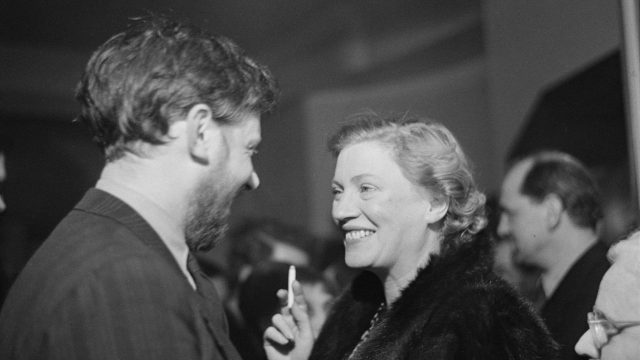
It’s difficult to imagine “a more compelling biography” than that of Lee Miller, said Alastair Sooke in The Daily Telegraph. Born in upstate New York in 1907, she found fame as “an androgynous fashion model” in 1920s Manhattan, but soon decided (as she put it) that she would “rather take a picture than be one”. Her next act saw her decamp to Paris, where she became involved with the city’s flourishing modern art scene, falling in love and then collaborating with the surrealist photographer Man Ray.
But Miller was an artist in her own right: an unsettling, surrealist-tinged photographer, and a celebrated wartime photojournalist who captured everything from the London Blitz to the liberation of Dachau. One much-reproduced portrait, taken by her colleague David E. Scherman the day Hitler’s death was announced, pictured her in the bathtub of the dictator’s Munich apartment. This show is the biggest retrospective ever devoted to Miller’s singular talent in this country, bringing together around 230 exhibits that trace her career from start to finish. Featuring some deathless images, it’s a “sexy yet devastating” show that does justice to her art while keeping her “scintillating life story front and centre”.
The exhibition recounts Miller’s story “through her own impeccable eye”, said India Block in The London Standard. We begin with a gallery documenting her brief but stellar modelling career, in the course of which she posed for many famous photographers: Edward Steichen, for example, would sell a portrait of her to Kotex, making her “the unwitting face of sanitary pads”. But things really warm up once Miller arrives in Paris, where she honed her eye for the city’s “unusual and macabre” side: she records an oil slick on a pavement, “rats with tails dangling in a row”, a hand against scratched glass, creating “the illusion of an explosion”. A particularly sinister image sees a dissected human breast “plated up against a chequered tablecloth”; Miller was moonlighting as a surgical photographer, and made use of the result of a mastectomy for the prop.
There’s plenty of celebrity glamour here, said Mark Hudson in The Independent. Miller apparently “knew everyone” in Paris, her famous friends included Picasso, Charlie Chaplin and Jean Cocteau – all of whom we see here in photographic portraits. But in the aftermath of the Second World War, she married the British surrealist Roland Penrose and moved to London. If anything, that conflict only amped up the oddness of her pictures: she staged fashion shoots in the rubble of Blitzed-out London and, from 1944, chronicled the US army’s march through Europe as an official photographer. Some of the scenes she recorded are genuinely shocking: an “angelic female figure” pictured in 1945 is in fact the corpse of a German girl who had been given cyanide as Allied forces approached; American soldiers are seen peering at an emaciated corpse at Dachau, their faces registering not horror but “bombed-out resignation”.
Throughout, her “unflappably cool eye” never deserts her. The strain began to show after the War, however: she all but abandoned art, succumbing to “alcoholism and depression” and dying in 1977. I’m not sure this exhibition entirely succeeds in isolating Miller’s work from her status as an “iconic beauty and muse”, but it is “revelatory” nonetheless.
Tate Britain, London SW1. Until 15 February
The ‘revelatory’ exhibition tells the photographer’s story ‘through her own impeccable eye’






